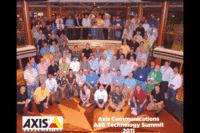Remote Guarding Goes Full Steam Ahead
UL LLC’s UL 827B is upgraded for superb performance in managed video monitoring services.

Neil Lakomiak, director of business development & innovation, UL LLC, says remote guarding is picking up steam due to advancements in video analytics. PHOTO COURTESY OF UL LLC
With the proliferation of networked video, a host of new uses for this technology will emerge. One that is picking up steam is remote guarding, which can involve network-connected video cameras, video analytics software, command and control, and monitoring stations. The objective of remote guarding is to provide the ability to monitor assets from a remote location in a more cost-effective manner. Depending upon the site or asset being protected, this technology may even be able to augment or reduce the need for physical guards. Video analytics software helps make this possible.
With video analytics software, specific threats, activities and conditions can be flagged in real time and presented to a monitoring center operator for appropriate action. While the analytics software works in the background, prescribed events that require operator assessment can be presented, allowing for many protected sites to be monitored from a single location with minimal human resources.
Another advantage of remote guarding is the ability to leverage the technology to take more preventative security measures. For example, certain behavior patterns could be identified and presented to an operator for assessment.
To evaluate the performance and ability of a company to provide remote guarding services, UL, a global safety science organization, upgraded the requirements in UL 827B to include this type of managed video monitoring service.
The scope of UL 827B, Outline for Managed Video Services, covers managed video service providers that deliver security services by leveraging video cameras and related video technologies installed at protected properties to form all or part of an electronic security system. The managed video service provider employs staff at a managed video monitoring station (command center/central station) to view video streams, make situation-awareness informed decisions, interact with people or systems at a protected property, notify identified parties of events, or provide other services as detailed in a written agreement between the provider and subscriber.
Obtaining certification to UL 827B involves active management of security events and subsequent engagement, including handoff and tactical support to law enforcement, all in real time via command-center based agents executing command and control over the client sites. Qualified monitoring stations with a UL certification undergo an annual audit by UL’s audit staff to verify continued compliance. These audits assess both the monitoring station facility and the delivery of services to subscribers who have been issued UL Monitoring Certificates.
To learn more about UL’s testing and certification for compliance to UL 827B and UL 827, please visit www.ul.com/alarmservice. You may also email Peter Tallman, program manager for alarm certificate services at peter.h.tallman@ul.com.
Looking for a reprint of this article?
From high-res PDFs to custom plaques, order your copy today!





